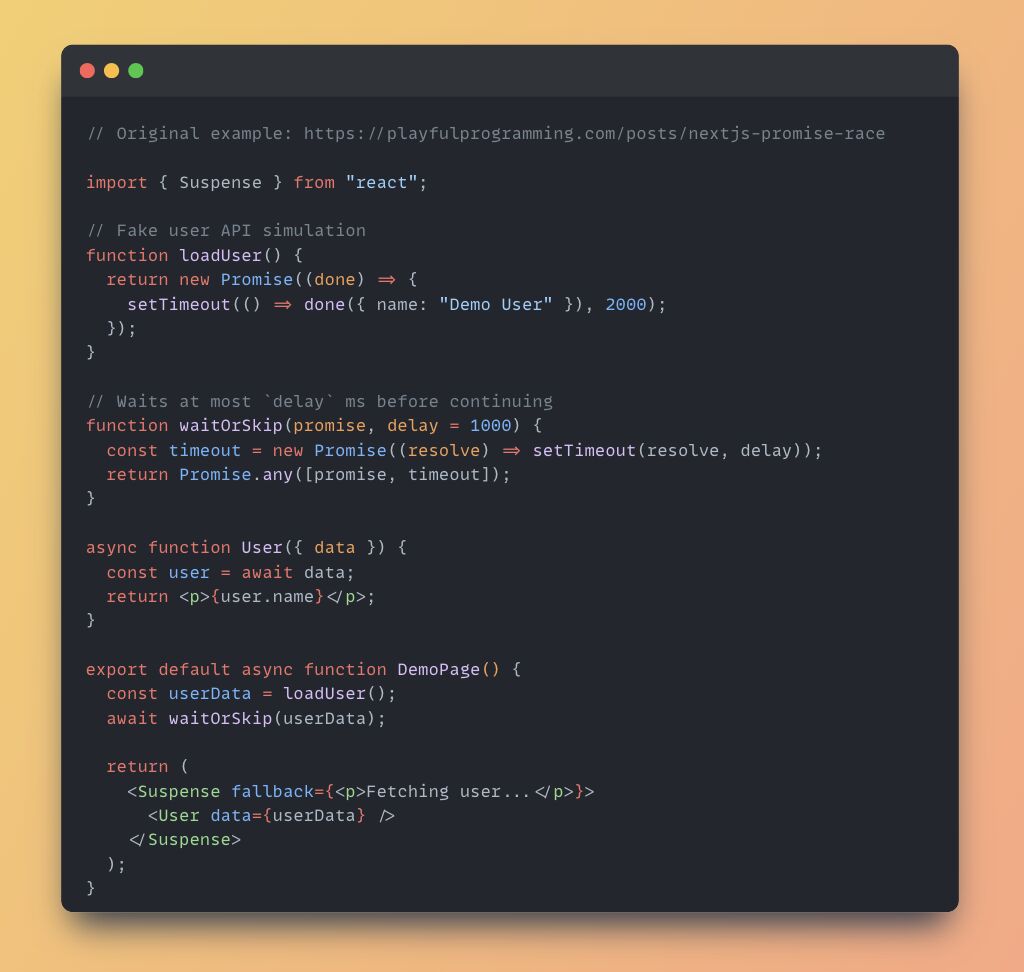Race Server Fetches with React Server Components + Suspense

When building modern web apps, it’s easy to default to showing a loading spinner for every async operation. But what if your server is fast enough that the spinner becomes unnecessary noise?
That’s where this clever React Server Components (RSC) + Suspense pattern comes in.
Instead of blindly rendering a loading UI, you race the server fetch against a timeout. If the server responds quickly, you skip the fallback UI. If it’s slow, Suspense gracefully takes over and shows a loading state.
⸻
💡 Why this pattern works:
- ✅ Only shows fallback UI when needed: No unnecessary spinners when the server is fast.
- ✅ Provides consistent UX across all network conditions: Users on fast and slow connections get an equally polished experience.
- ✅ No extra client code needed: This logic lives entirely on the server—no hydration bloat, no hacks.
⸻
🧠 How it works:
Here’s the high-level idea:
- Use an async React Server Component to fetch your data.
- Set a timeout (e.g. 200ms) to decide when to trigger fallback UI.
- Race your fetch request against the timeout.
- If the timeout “wins”, Suspense kicks in with the fallback.
- If the server responds first, the component renders instantly.
You essentially create a better default for loading behavior.
⸻
🚀 When to use this:
- Critical UX flows like dashboards, analytics, and content feeds
- When server response is often < 300ms, and spinners become visual clutter
- When you want to avoid hydration cost or loading logic on the client
⸻
✅ Takeaways:
This small shift can dramatically improve perceived performance. You keep users focused on content, reduce flicker from spinners, and maintain a clean server-first architecture.
In a world of heavy frameworks and over-engineered spinners, this is a refreshingly elegant solution—built right into React itself.
Follow me @kheang for dev tips, clean patterns, and smarter ways to ship code.